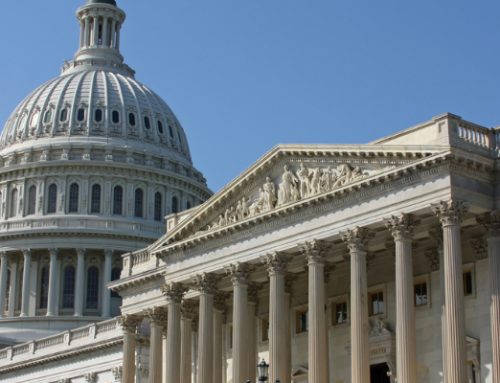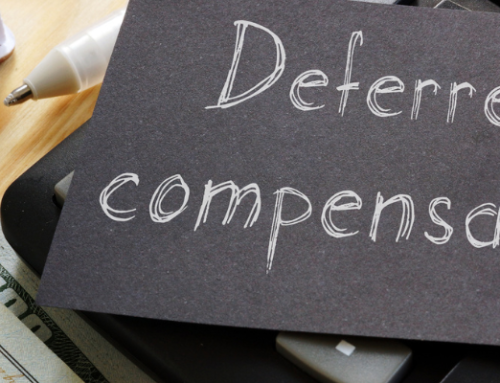Holiday office parties are back, sort of. While many companies are still holding off on big gatherings, at least a quarter of employers are planning or have already had a holiday party. Whether those gatherings are at the office and catered by a restaurant or hosted on-site, temporary tax changes allow for a 100 percent expense deduction for business meals.
Holiday parties aren’t the only way to qualify; now is the time to plan future employee gatherings of all kinds to reap the tax benefits.
New Rules for Deducting Business Meal Expenses
Typically, businesses can deduct 50 percent of qualified meals. In standard tax years, that would include any business meal expense, whether it’s a client meal at a restaurant or buying snacks for the office.
The Consolidated Appropriations Act, which was passed at the end of 2020, temporarily amended the business meal deduction and expanded it. For 2021 and 2022, the business meal deduction is 100 percent, but with a few caveats.
To qualify, a restaurant must have provided the food. There’s no difference between dining on-site or getting a catered meal delivered. The full tax deduction also applies to any beverages the restaurant provides in a business setting. Business meals provided by a restaurant but delivered using a third-party service also qualify – in other words, the company doesn’t necessarily have to pay the restaurant directly. Dine in, take out, and delivery are all acceptable, and any tips, delivery fees, or sales taxes are counted in the total expense.
It’s not just business meal expenses that are 100 percent deductible, either. Certain business entertainment expenses are, too. Employee parties – holiday or otherwise – picnics, outings, and team-building events will all qualify for a 100 percent deduction. To qualify for the 100 percent entertainment deduction, the party must be primarily for employees – not owners or highly compensated individuals – and appropriate documentation must be maintained.
Also remember that buying non-branded client gifts is tax deductible up to $25 per individual recipient. So not only do holiday parties qualify for a tax break, but client gifts do, too.
How to Qualify For a 100 Percent Business Meal Deduction
Not everything purchased at or through a restaurant will qualify. The expenses must be ordinary and necessary and comply with Section 162 of the tax code.
Extravagant and lavish business meals do not qualify. This doesn’t mean companies must adhere to a certain budget or avoid expensive restaurants. The IRS usually won’t disallow an expense simply because it seems expensive; context and circumstances are important determining factors as well as supporting documentation, and most taxpayers won’t have an issue adhering to this rule.
The taxpayer must be present for the expense to qualify. For group events, the other attendees must be either clients, customers, employees, suppliers, vendors, agents, partners, advisors, or otherwise in a capacity directly related to the business.
Standard IRS rules for a restaurant also apply. A restaurant is defined as “a business that prepares and sells food or beverages to retail customers for immediate consumption, regardless of whether the food or beverages are consumed on the business’s premises.”
Grocery stores, specialty food stores, vending machines, beer or liquor stores, convenience stores, and other establishments that primarily sell pre-packaged, nonperishable food and other goods do not qualify as a restaurant under these new rules. Business meal expenses incurred at these locations would only qualify for the 50 percent standard deduction, not the 100 percent expanded meals deduction.
Per Diem Meal Expenses
There’s also per diem meal expenses to consider. When traveling for work, instead of keeping receipts and records to substantiate business meals, taxpayers can elect to use the per diem rate, a daily allowance for business expenses. The rate changes each October 1 and can vary between high-cost locations, like New York City, and all others.
For the fiscal year beginning October 1, 2021, the high-cost location per diem rate for meal expenses is $74 and $64 for all other locations.[1]
In recent IRS guidance, Notice 2021-63, the IRS clarified that any meal portion of the per diem rate is 100 percent deductible and considered as purchased at a restaurant. This applies to expenses incurred between January 1, 2021 and December 31, 2022.
Accounting for the Temporary 100 Percent Deductions
Employers will need to update their chart of accounts to reflect the temporarily expanded business meal and entertainment deductions. Create a new meals expense account separate from similar expenses that still fall under the 50 percent deduction. The account can be named anything; the important point is to differentiate the 100 percent deductible expense category from a similar 50 percent one. Non-deductible entertainment expenses will need to continue to be recorded in a separate account.
For reference, activities like providing employee meals from an in-house cafeteria or cooking a meal in a hotel room while traveling for business are both examples of 50 percent deductible meal expenses.
Without updating the chart of accounts, it can be easy for businesses to mistakenly put a 100 percent deductible expense into the wrong meal expense category and miss out on half the tax deduction when they file their year-end tax return.
Some business meal and entertainment deductions remain non-deductible that are considered related to entertainment, amusement, or recreation activities. These include mostly customer, client, and prospect events and any travel expenses associated with a spouse or dependent accompanying an employee on business travel. Deductible entertainment expenses are those provided either for the company or primarily for the benefit of the employees. Also recall that at non-deductible entertainment events, any food and beverage expenses must be separately stated on the receipt or invoice to qualify for the meals deduction.
Take the time before tax season to review all business meal and entertainment expenses and ensure they are categorized properly and have appropriate matching documentation. This is an easy way for businesses to save money on taxes while supporting the struggling restaurant industry, and a strong motivator to hold more employee parties and gatherings as 2021 winds down and into 2022. Hopefully, 2022 will be the year that client and employee business meetings in a restaurant will become more popular again and replace some of the virtual business meetings we have become accustomed to during the past two years.
For questions about the updated IRS guidance on 100 percent business meal deductions or the per diem expenses, contact Charles Dean Smith, Jr., CPA and Partner in PBMares’ Tax practice.
[1] https://tax.thomsonreuters.com/blog/irs-announces-special-per-diem-rates-for-travel-away-from-home-beginning-october-1-2021/





